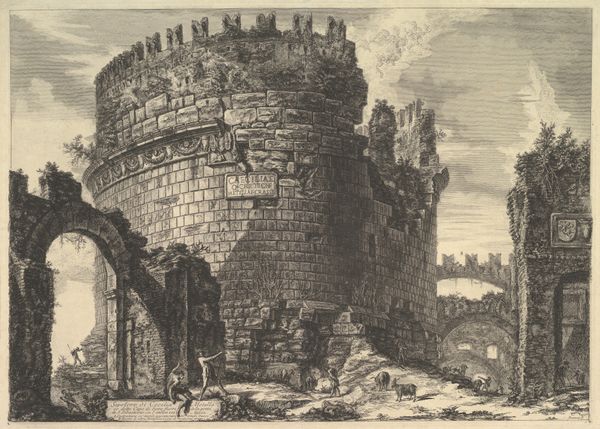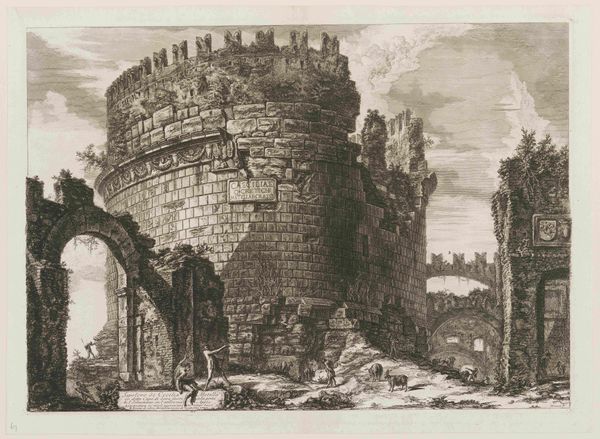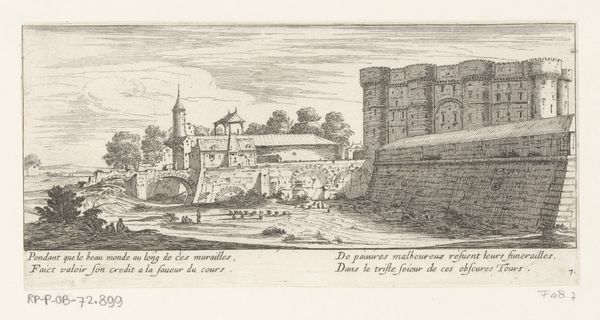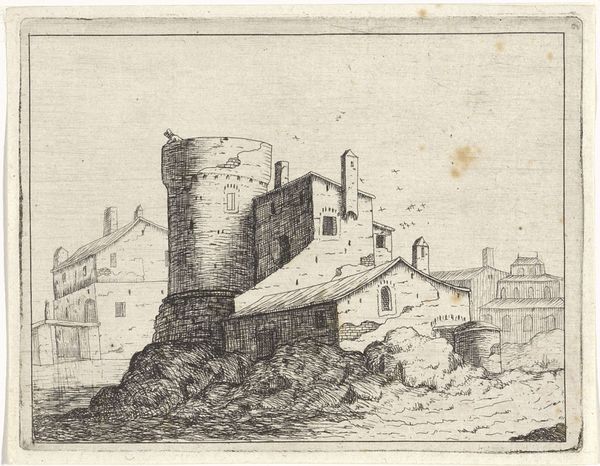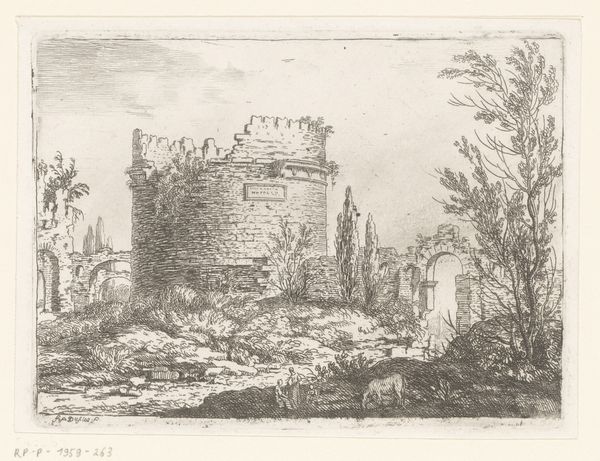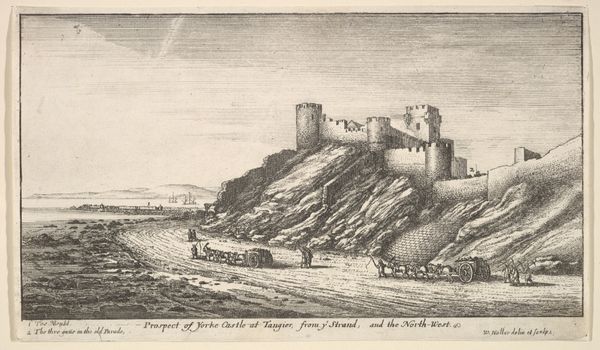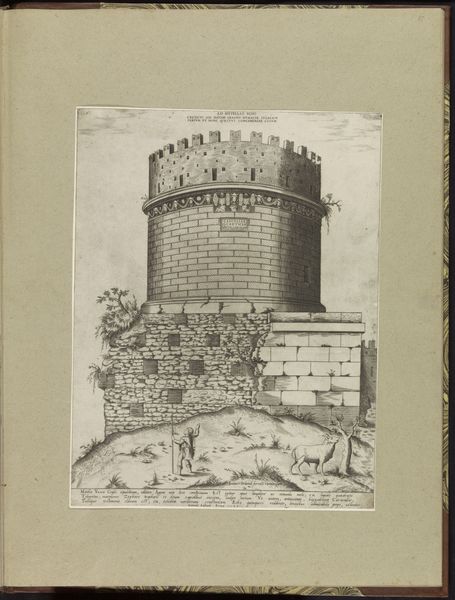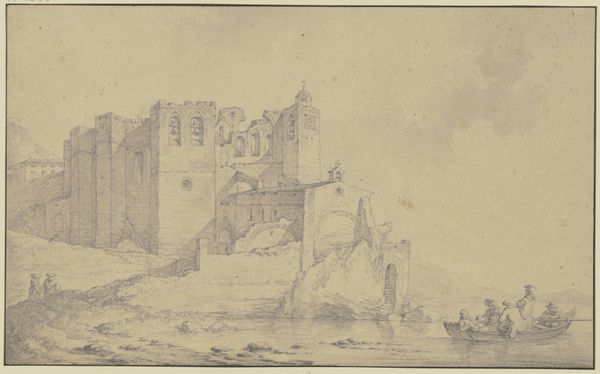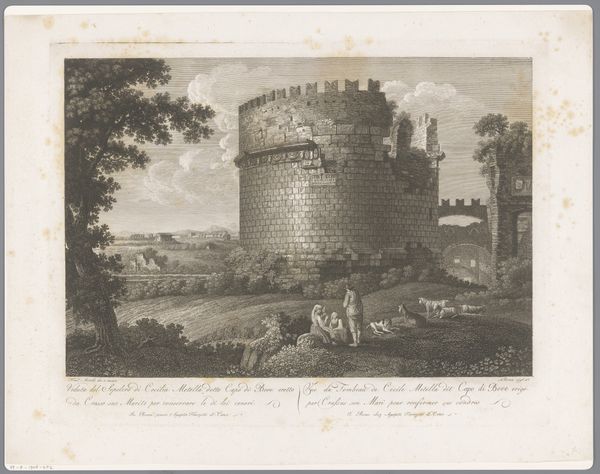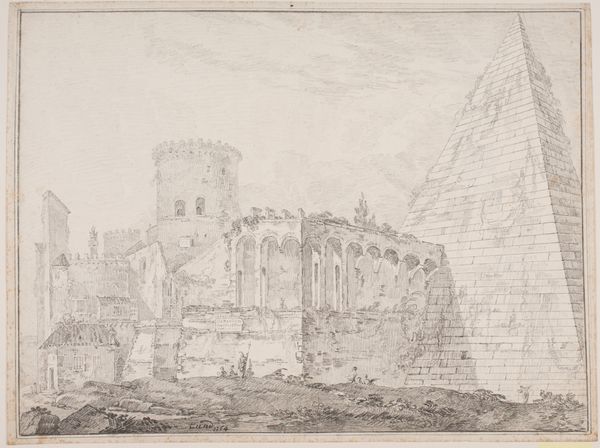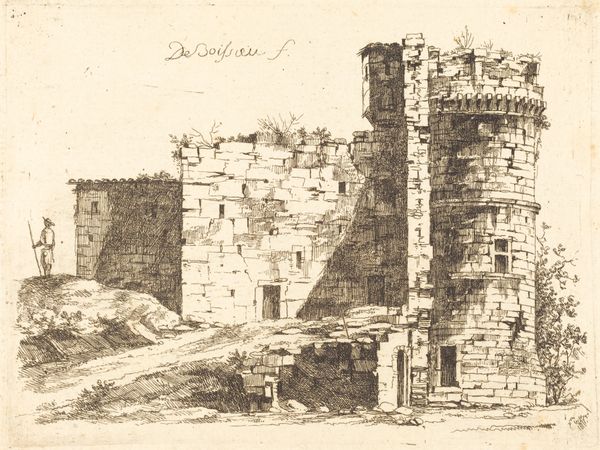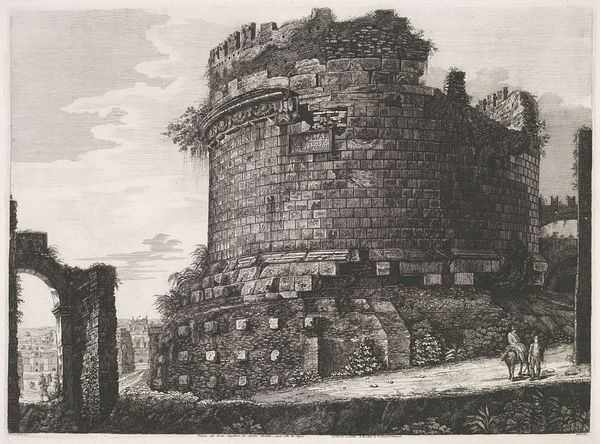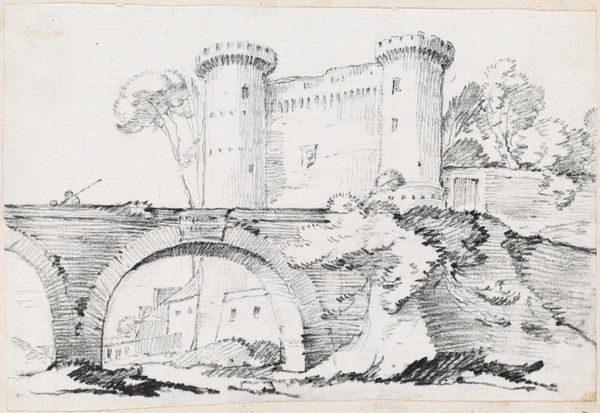
print, engraving, architecture
# print
#
landscape
#
italian-renaissance
#
engraving
#
architecture
Dimensions: height 95 mm, width 129 mm
Copyright: Rijks Museum: Open Domain
Giovanni Battista Mercati created this print of the Tomb of Caecilia Metella in Rome using etching, a printmaking technique dependent on acid and metal. Here, a metal plate, likely copper or zinc, was coated with a waxy, acid-resistant substance called a ground. The artist then drew through the ground, exposing the metal. Immersing the plate in acid, the drawn lines are 'bitten' into the surface. Ink is then applied to the plate, lodging in the etched lines. Finally, the plate is pressed onto paper, transferring the image. Look closely. You can see how Mercati used line-work to describe the heavy, cyclopean masonry of the tomb. The very precision and replicability of the etched line speaks volumes about the rise of print culture during this period. Prints were crucial to the circulation of knowledge, allowing for the mass dissemination of images and ideas. In this case, the subject is an ancient monument, but the material and process—etching—belong to a distinctly modern world. Ultimately, the artistic value lies in the convergence of subject, process, and social context.
Comments
No comments
Be the first to comment and join the conversation on the ultimate creative platform.
